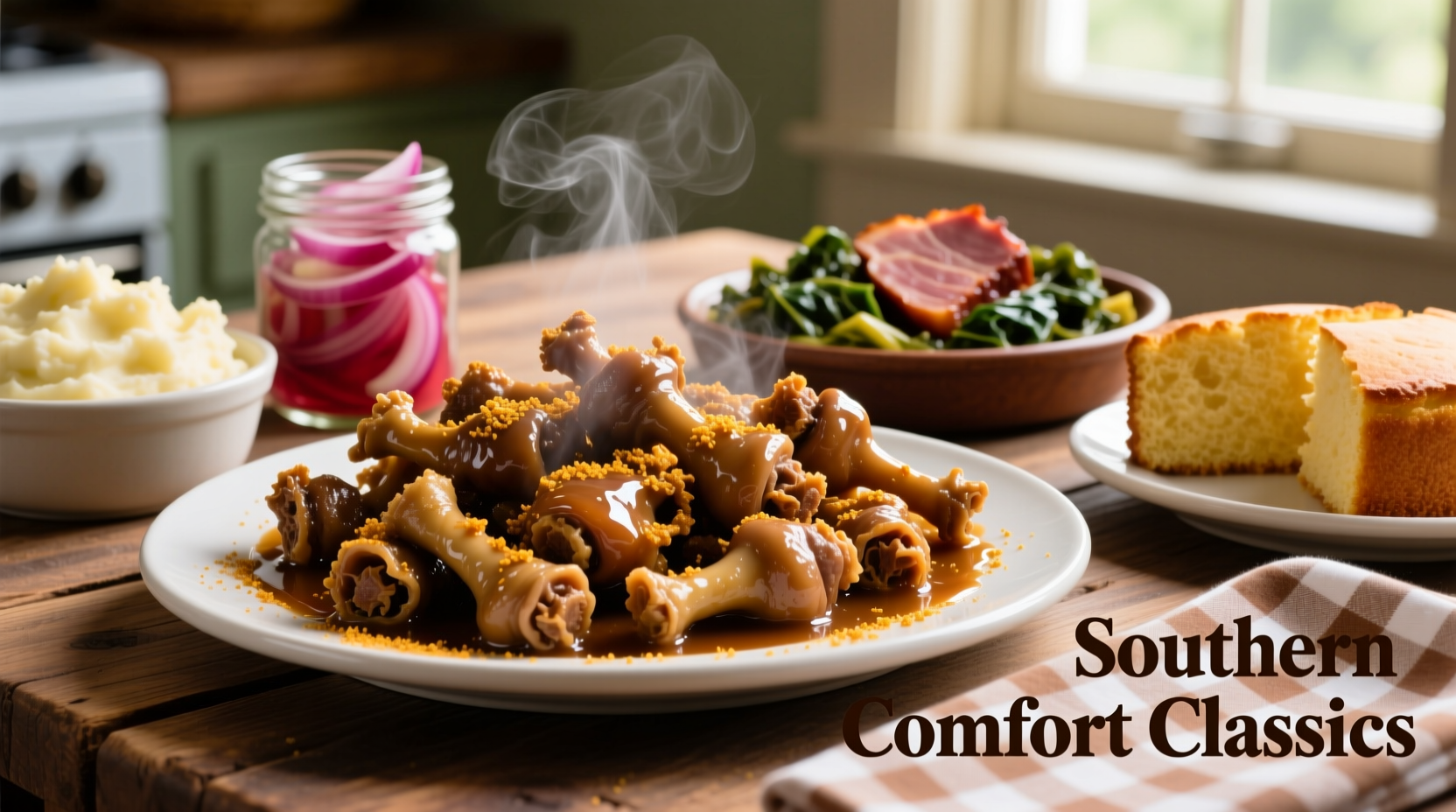Understanding Chitlins: More Than Just a Southern Specialty
When you ask what are chitlins food, you're exploring one of America's most historically significant comfort foods. These aren't just any offal—they represent resilience, resourcefulness, and cultural identity that has endured for centuries. Let's break down everything you need to know about this distinctive dish that continues to grace tables across the American South and beyond.
The Historical Journey of Chitlins
Chitlins trace their origins to West African culinary traditions, where various animal parts were utilized completely—a practice born of necessity and respect for the animal. Enslaved Africans in America adapted these techniques using available resources, transforming what slaveholders considered "undesirable" cuts into culinary treasures.
Evolution of Chitlins in American Cuisine
- Pre-1865: Enslaved communities developed chitlin preparation methods using discarded pig intestines
- Early 1900s: Chitlins became established as soul food staples during the Great Migration
- 1960s: Adopted as cultural symbols during the Black Pride movement
- Present Day: Enjoyed globally with modern preparation techniques while maintaining traditional significance
What Exactly Are Chitlins Made From?
Chitlins consist of the small intestines of pigs, though occasionally beef or sheep intestines may be used in other culinary traditions. The preparation process is extensive and requires careful attention:
- Cleaning: Multiple rounds of washing with vinegar, salt, and water to remove impurities
- Trimming: Removing excess fat and membrane
- Soaking: Often in water with seasonings for several hours
- Cooking: Typically boiled for 3-4 hours, sometimes followed by frying
The distinctive preparation process transforms what would otherwise be inedible into a dish with a tender yet slightly chewy texture and rich flavor that absorbs seasonings beautifully.

Cultural Significance Beyond the Plate
Understanding what are chitlins food requires recognizing their profound cultural importance. In African American communities, chitlins represent:
- A symbol of making something valuable from limited resources
- A connection to ancestral cooking traditions
- A centerpiece for family gatherings, particularly during New Year's celebrations
- An expression of cultural identity and pride
The annual National Chitlin' Strut festival in Anson, North Carolina—running since 1960—demonstrates how this food has become embedded in community identity. According to research from the Smithsonian National Museum of African American History and Culture, traditional soul food dishes like chitlins serve as edible history, preserving stories of survival and creativity.
| Nutritional Component | Per 3-ounce Serving | Significance |
|---|---|---|
| Protein | 15g | Complete protein source |
| Vitamin B12 | 40% DV | Supports nerve function |
| Iron | 15% DV | Essential for blood health |
| Zinc | 20% DV | Boosts immune function |
Source: USDA FoodData Central, National Institutes of Health
Modern Preparation and Where to Find Them
Today, you can find pre-cleaned chitlins in most grocery stores across the American South, particularly around holiday seasons. For authentic what are chitlins food preparation, follow these contemporary best practices:
- Purchase options: Look for pre-cleaned varieties to reduce preparation time
- Home cooking: Many families maintain multi-generational recipes with secret seasoning blends
- Restaurant availability: Common in soul food restaurants year-round, especially during winter holidays
- Commercial products: Canned and frozen options have improved significantly in quality
Properly prepared chitlins should never have an unpleasant odor—that's a sign of inadequate cleaning. When cooked correctly, they take on the flavors of the seasonings used, creating a complex taste profile that has sustained their popularity for generations.
Common Misconceptions About Chitlins
Many people wonder what are chitlins food and assume they're an acquired taste only for certain communities. Let's address some common misunderstandings:
- Myth: Chitlins are only eaten out of necessity Fact: They're deliberately chosen for cultural celebration and flavor
- Myth: They're difficult to prepare safely Fact: With proper cleaning techniques, they're as safe as any meat product
- Myth: Only older generations enjoy them Fact: Younger chefs are reinventing chitlins with modern twists while honoring tradition
According to culinary anthropologists at the University of Mississippi's Center for the Study of Southern Culture, chitlins have evolved from survival food to celebrated cultural heritage, with preparation methods now taught in culinary schools as part of American food history.
How to Experience Authentic Chitlins
If you're curious about trying chitlins or understanding what are chitlins food beyond textbook definitions, consider these authentic experiences:
- Visit soul food restaurants in the American South during holiday seasons
- Attend community events like the aforementioned National Chitlin' Strut
- Connect with cultural organizations preserving African American culinary traditions
- Explore cookbooks by renowned soul food historians like Michael Twitty
Remember that chitlins aren't just about the food itself—they're about the stories, the community, and the resilience embedded in each carefully prepared batch. When you understand what are chitlins food, you're connecting with a living piece of American cultural history that continues to evolve while maintaining its essential character.











 浙公网安备
33010002000092号
浙公网安备
33010002000092号 浙B2-20120091-4
浙B2-20120091-4